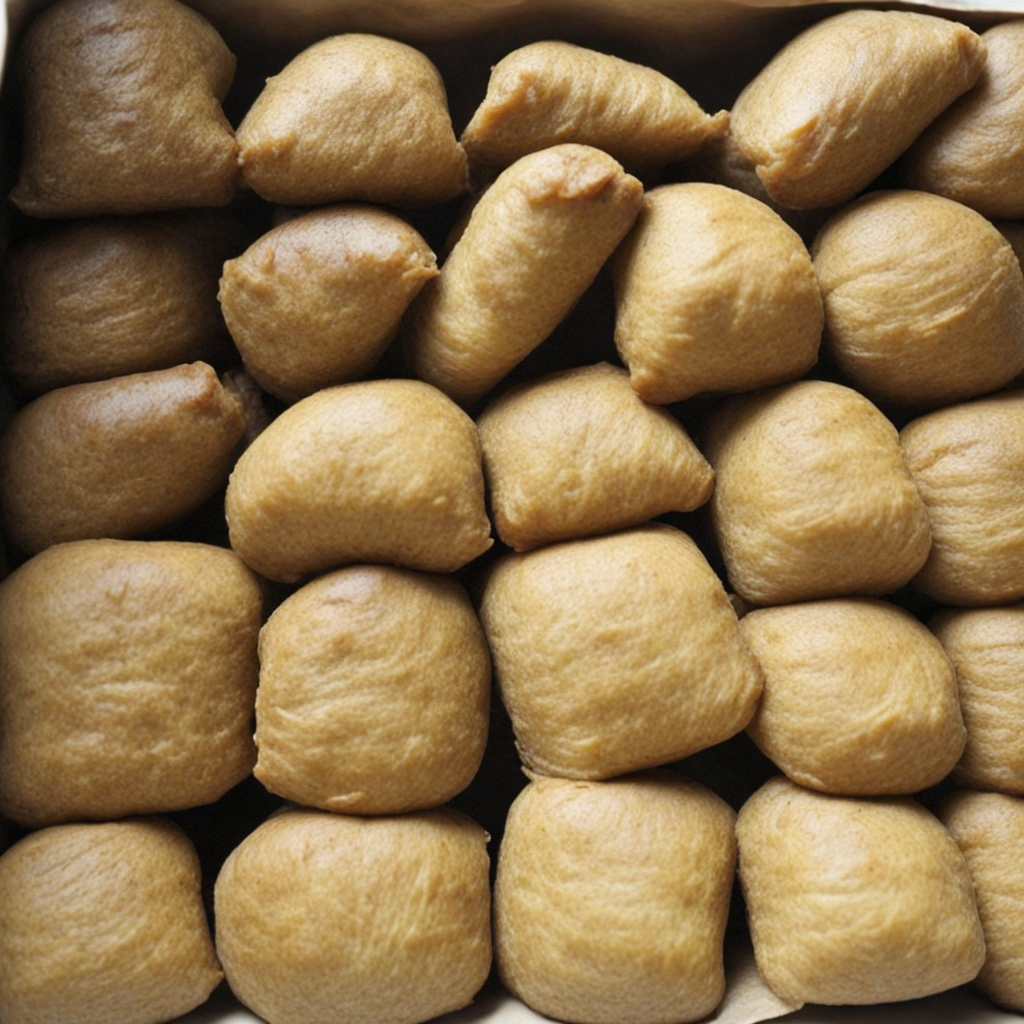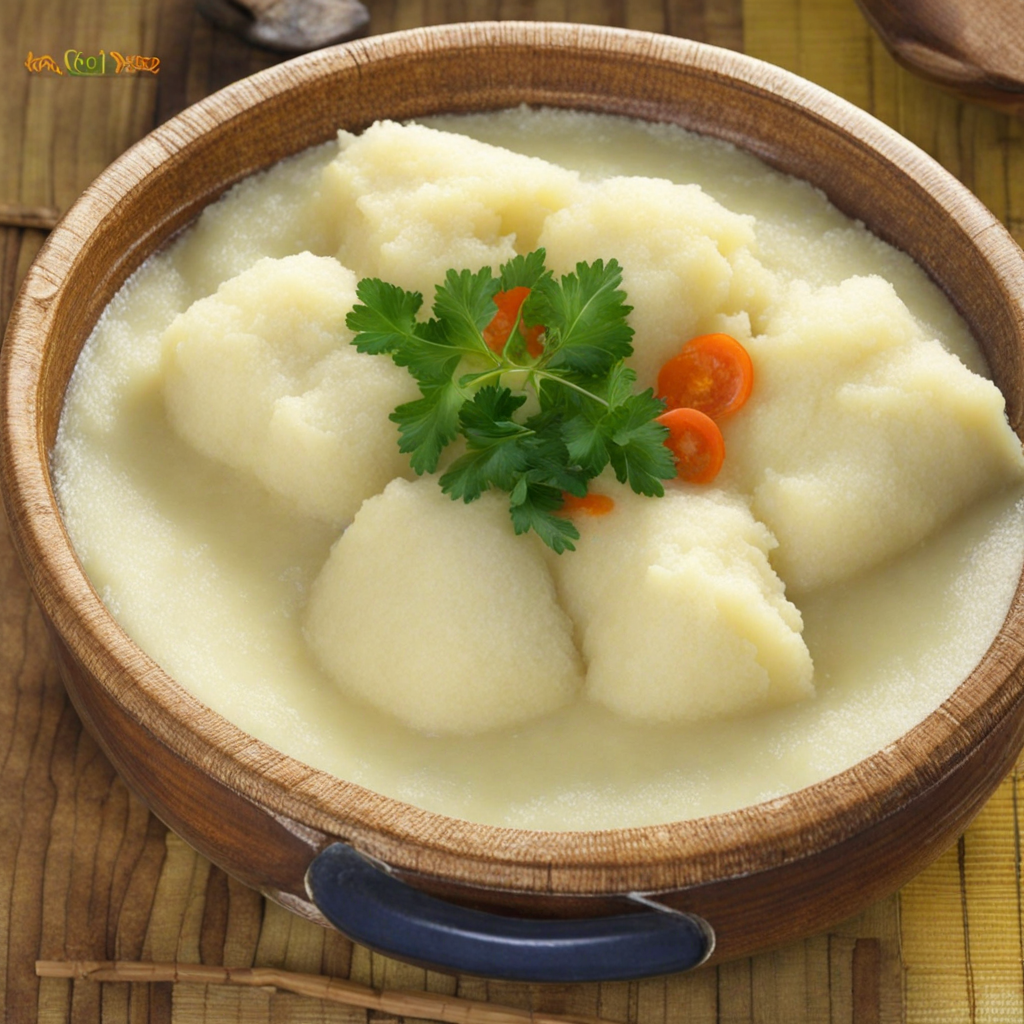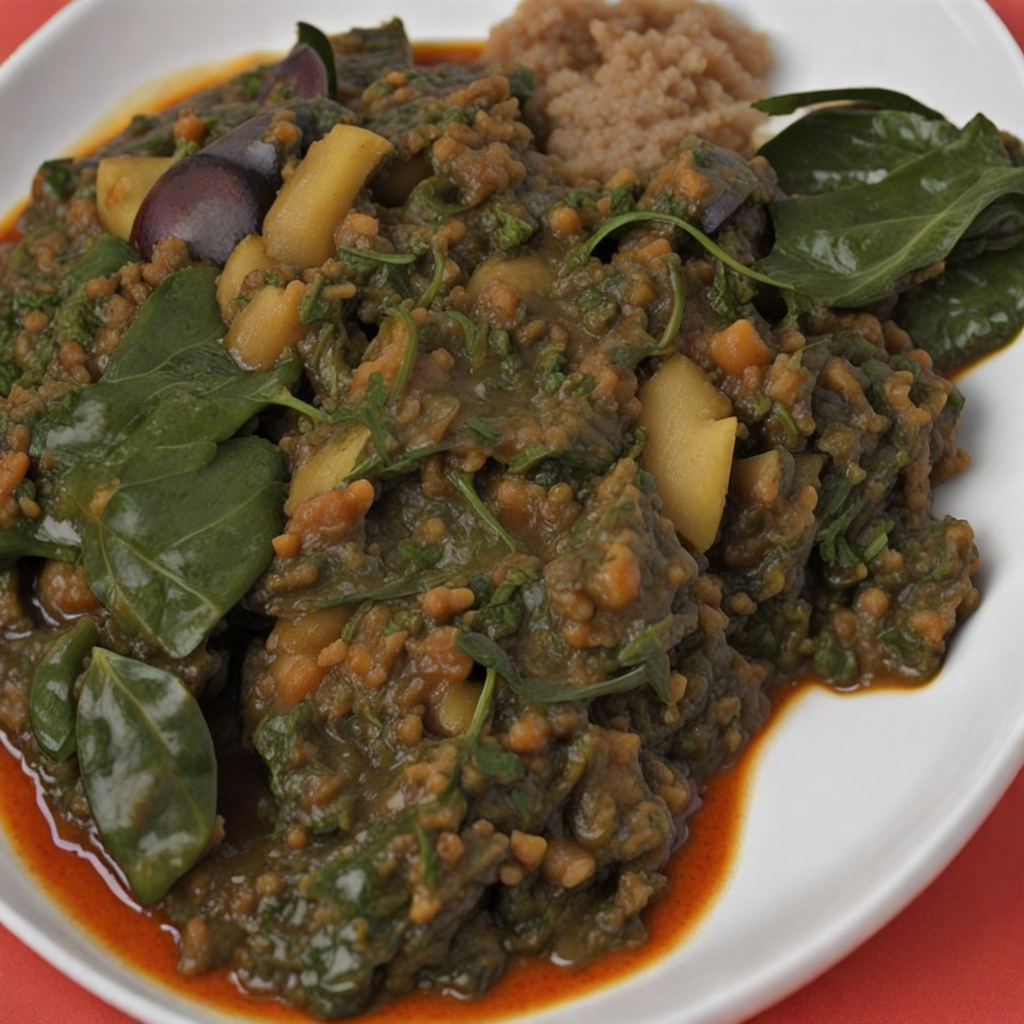Chikwangue
Chikwangue is a traditional dish from the Democratic Republic of the Congo, known for its unique texture and flavor profile. Made primarily from cassava, a starchy root vegetable, Chikwangue undergoes a meticulous preparation process. The cassava is peeled, cooked, and then fermented, resulting in a dough-like consistency. It is often wrapped in banana leaves and steamed, which not only enhances its flavor but also gives it a distinctive aromatic quality. The final product is a dense, chewy food that is both filling and versatile, often enjoyed as a staple in many Congolese households. The taste of Chikwangue is subtly earthy with a hint of sweetness from the cassava. Its flavor is relatively mild, making it an excellent accompaniment to a variety of dishes, especially those with rich sauces or spicy stews. It acts as a perfect canvas, soaking up the flavors of the accompanying ingredients, whether it be a tomato-based sauce, a spicy peanut stew, or grilled meats. The texture is often likened to that of a dense bread or dumpling, providing a satisfying chew that complements the heartiness of the Congolese cuisine. In addition to its culinary appeal, Chikwangue holds cultural significance in the DRC, often served during communal meals and celebrations. It embodies the spirit of sharing and togetherness, as families gather around to enjoy this beloved dish. For those looking to discover a new taste experience, Chikwangue offers a glimpse into the rich tapestry of Congolese flavors and traditions, inviting you to savor a truly authentic taste of the region.
How It Became This Dish
Chikwangue: A Culinary Treasure of the Democratic Republic of the Congo #### Origins Chikwangue, a staple food from the Democratic Republic of the Congo (DRC), holds a significant place in the culinary landscape of Central Africa. Its origins can be traced back to the Bantu-speaking peoples, who have inhabited the region for centuries. The Bantu migrations, which began around 1000 B.C., played a crucial role in spreading agricultural practices across sub-Saharan Africa, and it is during this time that cassava, the primary ingredient in chikwangue, was introduced to the Congo Basin. Cassava, a root vegetable native to South America, was brought to Africa by Portuguese traders in the 16th century. Its adaptability to various climates and poor soils made it an essential crop for many African communities. In the DRC, the cultivation of cassava became integral to the agricultural practices of various ethnic groups, including the Mongo, Luba, and Bakongo. The versatility of cassava allowed it to become a staple food, providing a reliable source of carbohydrates for communities across the nation. #### Cultural Significance Chikwangue is more than just a food item; it carries deep cultural significance for the people of the DRC. Traditionally, it is made from fermented cassava, which is peeled, grated, and then wrapped in banana leaves before being steamed. This labor-intensive process not only speaks to the culinary skills of the people but also reflects the communal spirit of Congolese society. The preparation of chikwangue is often a collective effort, bringing families and communities together, reinforcing social bonds and cultural identity. In the DRC, chikwangue is often served during important ceremonies, festivals, and gatherings, symbolizing hospitality and the sharing of resources. It is typically accompanied by various sauces, meats, and vegetables, highlighting the rich diversity of Congolese cuisine. Eating chikwangue is a communal experience; it is often shared from a common plate, emphasizing unity and togetherness among diners. Additionally, its presence at significant life events, such as weddings and funerals, underscores its role in marking important milestones within the community. #### Development Over Time As the DRC has navigated periods of colonization, conflict, and social change, the role of chikwangue has evolved while remaining a constant source of nourishment and cultural pride. The Belgian colonization of the Congo from the late 19th century introduced new agricultural practices and economic systems, but the resilience of local food traditions persisted. Despite the disruptions caused by colonial rule, chikwangue remained a vital part of the diet, demonstrating the ability of indigenous foods to adapt and survive through adversity. In the latter half of the 20th century, the DRC faced significant challenges, including political instability and civil wars. During these tumultuous times, food security became a pressing issue, and chikwangue's adaptability proved crucial. Its long shelf life, when properly prepared and stored, made it an essential food source for communities, particularly during periods of scarcity. The ability to produce chikwangue using locally available ingredients allowed families to maintain a sense of normalcy and continuity amid chaos. In recent years, globalization and urbanization have further transformed the culinary landscape of the DRC. As people migrate to urban centers in search of better opportunities, traditional foods like chikwangue have found their way into the diets of urban dwellers. Street vendors and restaurants in cities like Kinshasa and Lubumbashi serve chikwangue alongside contemporary dishes, bridging the gap between traditional and modern cuisine. This fusion reflects a broader trend of cultural exchange, where traditional foods are reinterpreted and adapted to suit changing lifestyles. #### Nutritional Aspects Chikwangue is not only a cultural staple but also a source of essential nutrients. Cassava is rich in carbohydrates, providing a significant energy source for the population. However, it is important to note that cassava must be properly processed to eliminate naturally occurring cyanogenic glycosides, which can be toxic if consumed in large quantities. The fermentation and cooking processes involved in making chikwangue effectively reduce these compounds, making it safe for consumption. Additionally, the dish can be paired with various proteins and vegetables, enhancing its nutritional value. #### Global Recognition In recent years, chikwangue has begun to gain recognition beyond the borders of the DRC. As interest in African cuisines continues to grow worldwide, chefs and food enthusiasts are exploring traditional dishes, showcasing their flavors and cultural significance. Chikwangue has been featured in culinary festivals and international food events, allowing it to reach new audiences and gain appreciation from diverse palates. Moreover, the rise of the internet and social media has facilitated the sharing of recipes and cooking techniques, creating a platform for people to learn about chikwangue and its significance. This newfound visibility has sparked curiosity among food lovers, encouraging them to experiment with traditional ingredients and cooking methods. Through these channels, chikwangue is not just a dish but a cultural ambassador, representing the rich culinary heritage of the DRC. #### Conclusion Chikwangue is a remarkable embodiment of the history, culture, and resilience of the people of the Democratic Republic of the Congo. Rooted in the agricultural practices of the Bantu peoples and shaped by centuries of tradition, it reflects the communal spirit and social fabric of Congolese life. As the DRC continues to navigate the complexities of modernity, chikwangue stands as a testament to the enduring significance of cultural heritage in the face of change. In a world increasingly focused on globalization and culinary fusion, chikwangue serves as a reminder of the importance of preserving and celebrating traditional foods. Its journey from a local staple to a dish gaining international recognition highlights the power of food to connect people across cultures and generations. As chikwangue continues to evolve, it remains a cherished symbol of the culinary identity of the DRC, inviting all to partake in its rich history and flavors.
You may like
Discover local flavors from Democratic Republic Of The Congo







